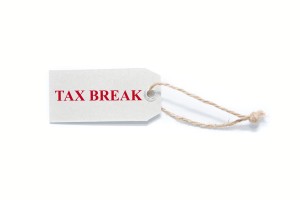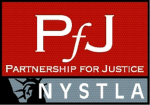 With April 15th approaching we wanted to take the occasion of this week’s blog post to remind our readers about the significant tax benefits available to plaintiffs’ counsel through the use of legal fee structures. Of course, it’s too late to do anything about the taxes you owe this year (other than pay them) but with a little forethought and advance planning, taking your fees through a tax-advantaged installment structure is an approach that can provide real benefits to you beginning with the very next case that you settle.
With April 15th approaching we wanted to take the occasion of this week’s blog post to remind our readers about the significant tax benefits available to plaintiffs’ counsel through the use of legal fee structures. Of course, it’s too late to do anything about the taxes you owe this year (other than pay them) but with a little forethought and advance planning, taking your fees through a tax-advantaged installment structure is an approach that can provide real benefits to you beginning with the very next case that you settle.
Given the general political climate and the various legislative initiatives in recent years, it’s hard to believe that this extraordinary tax benefit is uniquely available to members of the plaintiffs’ bar, and is of no effective use to other legal practitioners let alone to any other professions. That’s because the ability to use a fee structure really only becomes practical in connection with contingency fee arrangements.
At this point there is nothing speculative about using a fee structure. It is based on a tried-and-true tax structure that has been upheld in Tax Court and the 11th Circuit Court and which the Internal Revenue Service itself has now come around to accept in the ordinary course, provided that the formal requirements have been fully satisfied. We help our lawyer clients implement these structures regularly in the course of our practice as settlement advisors. (The leading case on this issue is Childs vs. Commissioner which you can read by clicking right here.)
The only catch is that you have to decide to implement a fee structure before the case settles in order the meet the requirements under applicable law. In the view of the IRS, an attorney is only viewed as earning a contingency fee on the date that settlement documents are actually signed. In effect, this gives you right up until the day before settlement to implement a fee structure in order to realize substantial tax benefits.
And just what are the benefits? You can think of a fee structure essentially as a 401(k) plan that can be implemented without regard to the limitations on the amount of annual contributions. So this allows you to spread the payment of any sized contingency fee out over the course of time, which means the fee will only be subject to tax when and as you receive periodic payment, in accordance to whatever payment schedule is incorporated into the structure. Spreading the timing of payment out in this way can actually result in a lower tax burden, depending on a variety of factors. Not only that but it enables you to realize the further benefit of tax-free compounding on the portion of the fees that remain unpaid, as is the case with any 401(k) type vehicle.
It’s an opportunity that’s almost too good to be true. It provides you with incredible flexibility in scheduling the timing of the income you receive, which is essentially the Holy Grail for all tax planning. A fee structure can be implemented with respect to all or any portion of a contingency fee, which enables you to take a lump sum at the time of settlement to cover litigation expenses or address the differing desires of your partners, as need be, and only defer the balance. A lawyer can establish a fee structure with respect to a contingency fee even when the client chooses to take their recovery in the form of a lump sum.
In the words of Robert Wood, a prominent tax specialist, it’s an extraordinary benefit that is only available to plaintiffs’ counsel. As Wood wrote in the Los Angeles Daily Journal not long ago, “If a contingent fee lawyer structures say 15 percent of every fee and puts it away tax-deferred for a rainy day, he would have achieved retirement income stabilization, estate planning and tax-deferred advantage that most people — and even most lawyers — can’t achieve.”
So we’re sorry we can’t do anything this year to help ease the pain for you of dealing with the IRS. But in the course of attending to the cases open on your docket, we suggest you consider giving us a call when it’s time for settlement talks to find out more about how we can help reduce the pain in the coming years.

